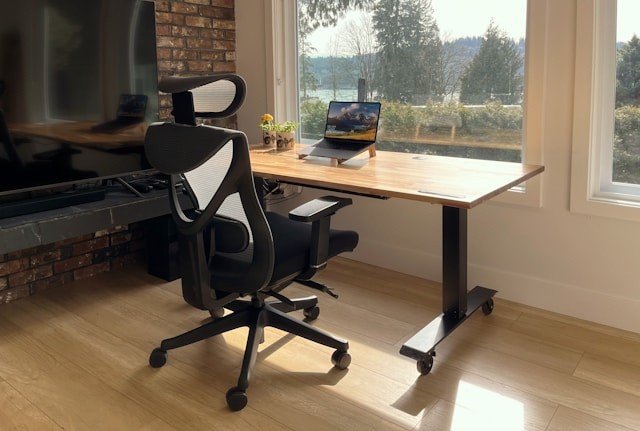
Since remote work gained traction since the pandemic, more and more people are getting creative with "home offices" to ensure they will exceed the productivity and comfort they have back in their office desks.
Ergonomics Explained
Ergonomics is the science of designing workstations that can adapt to various heights, working postures, and individual preferences that support their health, well-being, and productivity, Julie Dorsey, an occupational therapist at Ithaca College in New York, explains in a Forbes article.
Poor Office Ergonomics' Consequences
A body is compelled to adapt when an individual works in awkward postures, performs repetitive motions, or experiences poor lighting, which leads to muscle strain, joints, eyes, and overall physical health, explains Dorsey.
Here are the problems you can get when you have poor office ergonomics:
Vision Problems
Many individuals experience computer vision syndrome (CVS), characterized by eye irritation, dryness, double vision, and blurred vision after prolonged computer use that results in headaches and neck, shoulder, and back pain, a study published in the Survey of Ophthalmology finds.
Back and Neck Pain
Upper back and neck discomfort is frequently reported as accompanied by low back pain, which may be caused by a lack of proper chair support and a desk surface that is too high relative to the chair.
Over time, poor sitting posture and inadequate workplace ergonomics can also damage spinal structures and increase the likelihood of recurring neck or back pain episodes, UCLA Health reported.
Wrist, Hand and Shoulder Pain
At the University of California Santa Clara campus, computer-related injuries account for 26% of workers' compensation claims, with early warning signs of tingling sensations in the fingers, feeling fingers when falling asleep, waking up at night with wrist pain, or experiencing a loss of grip strength.
Here's What an Ergonomic Office Looks Like
Here are some of Dorsey's formulated recommendations for optimal office ergonomics for the American Occupational Therapy Association.
Your Chair
A good chair provides ample back support. If the chair lacks cushioning, adding pillows can help. Ensure your feet can comfortably rest on the floor, although using a footrest is also acceptable.
Your Desk
An ideal desk height should allow elbows to rest at a 90-degree neutral angle. If your desk is too high, a taller chair or adding pillow cushions can also help adjust your seating position.
Your Monitor
Position your eye level with the top edge of the monitor, around an arm's length away from your body. Utilize an external keyboard and mouse and elevate the screen by placing it on a box or stack of books so you do not need to hunch over when using a laptop.
Your Lighting
Position your monitor at a 90-degree angle from windows to prevent glare, and try using curtains if this is not possible. Also, keep your overhead lighting minimal and use a desk lamp near your workspace for proper lighting. Adhere to the 20-20-20 rule, where you must take a 20-second break to look at something 20 feet away from your screen every 20 minutes to prevent eye strain.
Your Keyboard and Mouse
Position the mouse close to the keyboard to avoid awkward shoulder movements when using it. An ergonomic mouse is also advisable so your hand stays in a neutral handshake position. Do not forget to align the "H" key on the keyboard with the center of your body for optimal comfort and efficiency.
Your Awareness
People often concentrate so intensely on the task that they neglect how their body feels, resulting in prolonged periods of poor posture.
Dorsey advises course-correcting by performing a quick body scan at least every hour to assess how you are feeling. This will help you identify potential problems before they become serious. Ergonomics is not solely about equipment and workstation setup; it also encompasses our work habits and practices.



